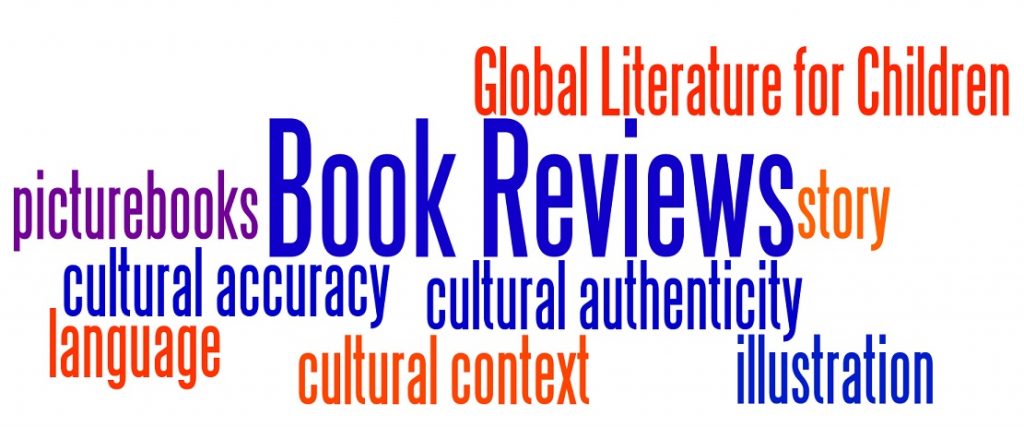By Judi Moreillon, Literacies and Libraries Consultant
Part 1: Goals and Process for Children’s Book Reviews
Children’s book reviewers serve as mediators between newly published children’s literature and those who promote, purchase or use these books. Newspapers and other media that promote children’s books use what book reviewers publish. Bookstores that sell children’s books refer to these reviews. School and public librarians, classroom teachers and families that purchase and share children’s books often rely on published reviews. Book reviewers, therefore, have the responsibility to be competent. Their reviews should accurately address all aspects of global children’s literature, including cultural authenticity and accuracy.

This month, I interview children’s librarian Mary Margaret Mercado, from Pima County Public Library. Mary Margaret grew up in East Los Angeles and has been a public librarian for nearly forty years. She currently reviews Mexican-themed and Spanish language books for two review sources. We focus our conversation on the types of children’s picturebooks Mary Margaret reviews.
After this introductory post, we organize the interview around three aspects of authenticity and accuracy. We will discuss the inaccuracies that can result when an author, illustrator or translator lacks cultural knowledge in Part 2. We will focus on authenticity and accuracy in story and illustration in Part 3. In Part 4, we will explore the accuracy of information gleaned from research or first-hand experience.
Judi: When did you begin writing children’s book reviews and what was your motivation for doing so?
Mary Margaret: I began writing children’s book reviews almost three years ago. I began reading reviews while earning my Master’s in Library Science. Before choosing to use a particular book from the catalog for storytime or reader’s advisory, I read the book review. If possible, I compared the actual book with the published review. Over the years, there have been reviews with which I agree. There have also been others that seem to have no relationship to my own experience of the book.
Early in 2014, I was looking at the list of new books in the catalog and became aware of a dinosaur book I thought would be an excellent addition to my storytime collection. When I read the review, I was disturbed by the way the reviewer portrayed the protagonist as having ponytails that “framed her dark face.” When I compared the actual book to the review, there were other aspects of the book review that troubled me.
I decided to write to the book review editor and share my perspective on the review and the book. We exchanged a few emails, and she offered me the opportunity to review for that publication. I review any books she sends me, but I mostly receive Mexican-American or Chicano-themed books. I average about three book reviews a month.
Around the same time, another review source put out a call for reviewers who could read and write in Spanish. After being accepted, I have been reviewing two or three Spanish-English bilingual or Spanish-language books a month for this review source.
Judi: What are your goals for your reviews and what is your book review process?
Mary Margaret: Many librarians no longer have access to preview or advance review copies of books before they purchase them for their patrons. Since many rely on reviews, I believe it is a reviewer’s responsibility to provide an accurate description of the book under consideration. My goal is to approach each book with an open mind, then write the most complete description possible within 250 words or less!
After reviewing the covers of picturebooks or highly illustrated informational books, I read any information that the publisher offers related to the author and the illustrator’s backgrounds. If there is additional material such as a pronunciation guide, glossary or author’s note, I read that first before reading the actual story or information.
I construct picturebook reviews in three parts. The first part of the review is about the story or information. The second part focuses on the illustrations for visual incongruities or strengths. In the third part, I address the cultural components of the book and give my recommendation. For the most part, the book review source editors publish my reviews as written. Occasionally, we will have a further conversation via email if there are “problems” with the book or questions about my assessment of it.
I do not believe that authors, illustrators or publishers intentionally publish books with stereotypes, cultural misrepresentations or misinformation. Still, it happens. So, it’s my job as a book reviewer to find any negative, inauthentic or inaccurate elements and point them out in my review.
Judi: You engage in a very thorough and thoughtful process.
This week, we talked about book reviewers. Next week, we will talk specifically about the importance of the author and illustrator’s cultural knowledge and translations as aspects of publication practices in global children’s literature.
Image Credit: Word Cloud created at Wordle.net
Journey through Worlds of Words during our open reading hours: Monday-Friday 9 a.m. to 5 p.m. and Saturday 9 a.m. to 1 p.m. Check out our two online journals, WOW Review and WOW Stories, and keep up with WOW’s news and events.
- Themes: book reviews, Judi Moreillon, Mary Margaret Mercado
- Descriptors: Interviews & Profiles, WOW Currents
